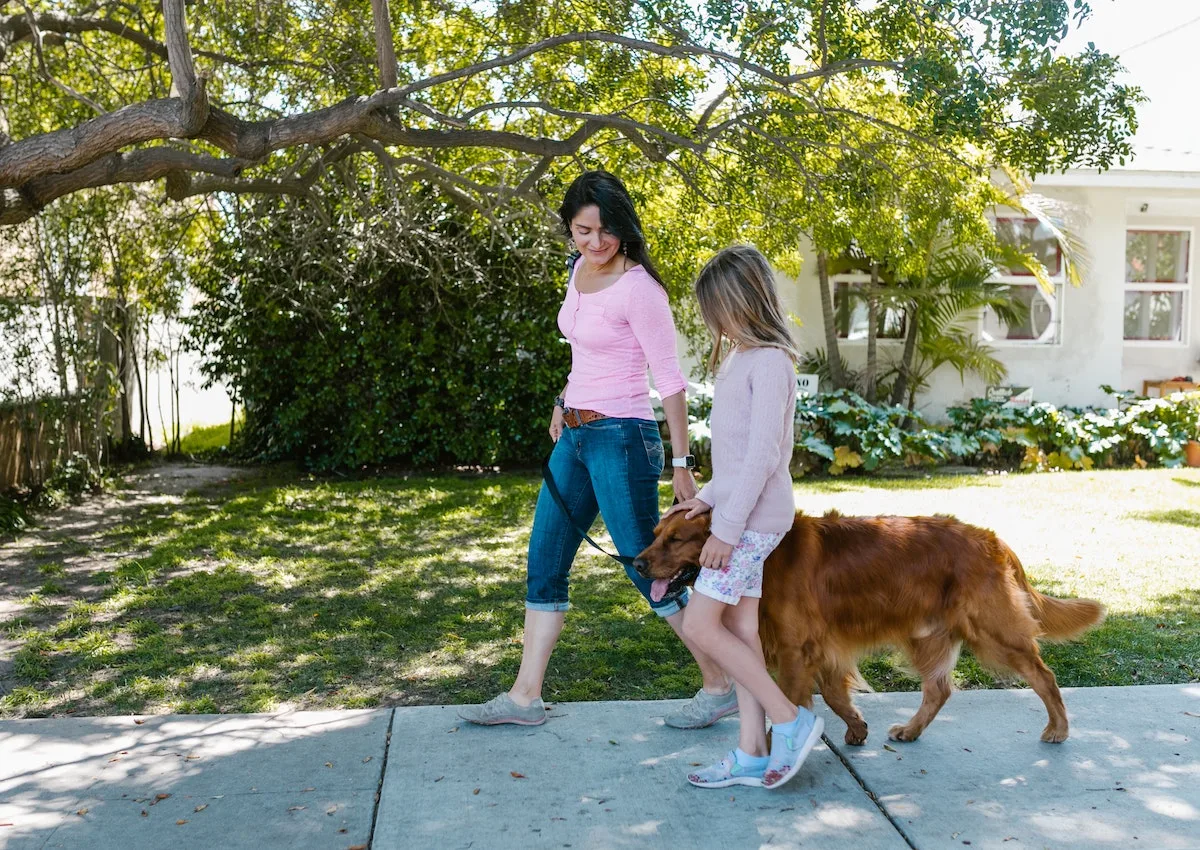The age-old advice of waiting before swimming after a meal has been ingrained in our minds, but what about walking our furry friends? Many dog owners wonder if the same caution applies to their pets.
To answer the question of whether walking your dog 30 minutes after eating is ok, we’ll explore gastric dilatation–volvulus syndrome (GDV)—often referred to as “bloat” which is an acute condition affecting primarily large and giant-breed dogs.
We’ll dive into the truth behind the “wait after eating” rule and provide research on when it’s safe and beneficial to take your dog for a walk after a meal.

The myth of immediate rest
Contrary to popular belief, the idea that dogs should wait a specific time before any physical activity after eating is largely a myth. While this advice might have been rooted in good intentions, modern understanding of canine physiology paints a different picture.
An article written by Dr. Carmelo Battaglia (2010) illustrated a study which found that there was no advantage in restricting exercise before or after eating. However, there is a caveat to this, a study published in Veterinary World (2010) recommended for dogs that have had GDV, avoiding vigorous activity immediately after meals and not allowing the dog to gorge on water after meals or activities.
Another study by Marko Pipan (2012) determined regular moderate daily postprandial (after eating) activity appeared to be beneficial for dogs with a high risk of GDV. The common theme amongst these studies appeared to be moderate activity was found to be helpful but strenuous activity was not recommended.
Digestive process in dogs
Dogs have a different digestive system than humans. Ever watch your dog chew a bone? They bite and crush large pieces of it before swallowing them whole without chewing. Their stomachs contain hydrochloric acid and are built to handle the digestion process of breaking down large pieces of protein.
Dogs also have muscular gastric folds which help grind and digest their food. A human begins the process in their mouth with the enzymes in their saliva. Dogs take about 8-9 hours for the entire digestive process versus a human, which according to the Mayo Clinic, takes two to five days.

Portion control and meal timing
One crucial aspect is meal portion and timing. Large meals right before strenuous exercise might cause discomfort, especially for deep-chested breeds that are prone to bloat. To avoid potential issues, consider feeding your dog smaller portions and allowing some time for digestion before engaging in vigorous activities.
However as stated in the study by Marko Pipan, moderate exercise after eating has been shown to reduce the potential for GDV.
Balancing activity and rest
Moderation is key. After a meal, opt for a leisurely leash stroll instead of running with your dog or intense play session. A gentle 30-minute walk can aid digestion by promoting blood flow and preventing stomach discomfort and possibly even bloat.
Breed considerations
Certain breeds, such as brachycephalic (short-nosed) dogs, might be more prone to breathing difficulties and exercise intolerance, so it’s essential to be extra cautious and consult your veterinarian.
Large deep-chested breeds have been shown to be more prone to GDV. A study published in the NIH showed that predisposed breeds include Great Danes, Saint Bernards, Weimaraners, Irish Setters, Gordon Setters, Standard Poodles, Basset Hounds, Doberman Pinschers, and Old English Sheepdogs.

Signs of discomfort
Always pay attention to your dog’s cues. If they show signs of distress, discomfort, or unusual behavior after a meal, it’s best to monitor them and let them rest. Consult your veterinarian if the behavior persists.
Individual variations
Each dog is unique, and what works for one might not work for another. Factors such as age, health status and individual tolerance should be considered when determining the right time for a post-meal walk. A study (1998) published in the NIH illustrated how increasing age in Great Danes was also a risk factor for GDV.
Can you walk your dog 30 minutes after eating?
In most cases, a walk 30 minutes after eating is a safe and enjoyable way to promote digestion and spend quality time with your furry companion. However, being attuned to your dog’s needs and considering their breed, meal size and overall well-being is essential.
Remember, a balanced approach that combines activity and rest will ensure a happy and healthy post-meal routine for both you and your beloved dog.

